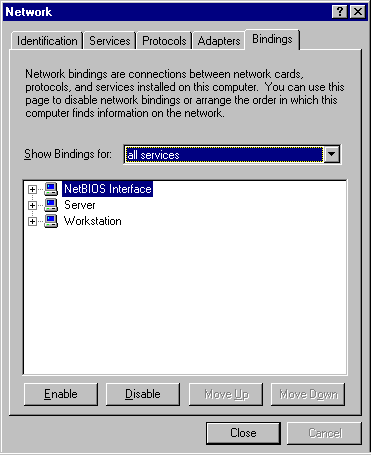
Earlier in this chapter, we discussed how the Windows NT network architecture consists of a series of layers and how components in each layer perform specific functions for the layers above and below it. The bottom of the network architecture ends at the network adapter card, which moves information between computers that are part of the network.

Figure 1.23 Network protocol bindings
The linking of network components on different levels to enable communication between those components is called binding. A network component can be bound to one or more network components above or below it. The services that each component provides can be shared by all the components bound to it.
When adding network software, Windows NT automatically binds all dependent components accordingly.
In the Network window, the Bindings tab displays the bindings of the installed network components, from the upper-layer services and protocols to the lowest layer of network adapter drivers. Bindings can be enabled and disabled, based on the use of the network components installed on the system.

Figure 1.24 The Settings tab of the Network window
Bindings can be ordered or sequenced to optimize the system's use of the network. For example, if NetBEUI and TCP/IP are installed on a computer, and if most of servers that the computer connects to are running only TCP/IP, the Workstation bindings should be examined. The administrator of this computer would want to make sure that the Workstation is bound to TCP/IP first and that NetBEUI is at the bottom of the list.
In Windows NT 3.1, the redirector uses the following method to establish a connection.
In Windows NT 3.5 and later, the redirector uses the following method to establish a connection.